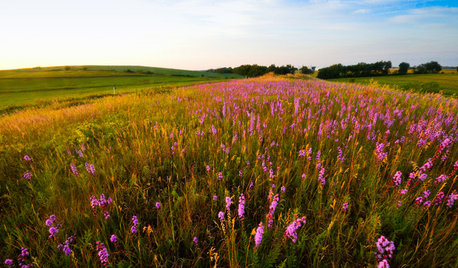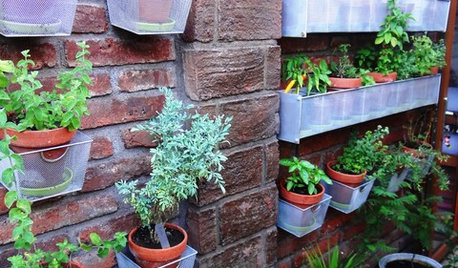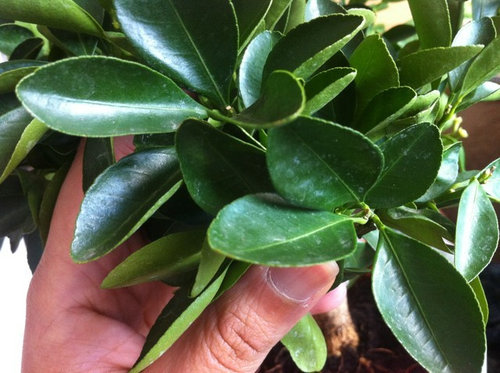White patches spreading on Calamondin leaves? Please help.
kiracagin
10 years ago
Related Stories

LANDSCAPE DESIGNHow to Design Your Landscape to Spread Water
Water that’s distributed widely will more readily soak into the ground
Full Story
REMODELING GUIDESWisdom to Help Your Relationship Survive a Remodel
Spend less time patching up partnerships and more time spackling and sanding with this insight from a Houzz remodeling survey
Full Story
GARDENING GUIDESGreat Design Plant: Snowberry Pleases Year-Round
Bright spring foliage, pretty summer flowers, white berries in winter ... Symphoricarpos albus is a sight to behold in every season
Full Story
SUMMER GARDENINGHouzz Call: Please Show Us Your Summer Garden!
Share pictures of your home and yard this summer — we’d love to feature them in an upcoming story
Full Story
HOME OFFICESQuiet, Please! How to Cut Noise Pollution at Home
Leaf blowers, trucks or noisy neighbors driving you berserk? These sound-reduction strategies can help you hush things up
Full Story
PETS6 Ways to Help Your Dog and Landscape Play Nicely Together
Keep your prized plantings intact and your dog happy too, with this wisdom from an expert gardener and dog guardian
Full Story
GARDENING GUIDESHelp Fuel the Monarch Migration With These 6 Prairie Plants
Try these nectar-rich beauties and help autumn monarchs
Full Story
GARDENING GUIDES9 Fresh Herbs for Crowd-Pleasing Thanksgiving Dishes
Pluck these herbs from a windowsill pot or a garden for a Thanksgiving meal that sings with fresh flavor
Full Story
HOUSEPLANTSMother-in-Law's Tongue: Surprisingly Easy to Please
This low-maintenance, high-impact houseplant fits in with any design and can clear the air, too
Full Story
COLORPick-a-Paint Help: How to Create a Whole-House Color Palette
Don't be daunted. With these strategies, building a cohesive palette for your entire home is less difficult than it seems
Full Story









kiracaginOriginal Author
petrushka (7b)
Related Professionals
Derry Landscape Architects & Landscape Designers · Accokeek Landscape Architects & Landscape Designers · Barrington Hills Landscape Architects & Landscape Designers · Forest Acres Landscape Architects & Landscape Designers · Arlington Landscape Contractors · Bowie Landscape Contractors · Edwardsville Landscape Contractors · Fairfield Landscape Contractors · Forest Hills Landscape Contractors · Milford Landscape Contractors · Newberg Landscape Contractors · North Plainfield Landscape Contractors · Vallejo Landscape Contractors · Mount Vernon Interior Designers & Decorators · Ashwaubenon Interior Designers & Decoratorssummersunlight
pirate_girl
kiracaginOriginal Author
petrushka (7b)
kiracaginOriginal Author
rhizo_1 (North AL) zone 7
petrushka (7b)
rhizo_1 (North AL) zone 7
petrushka (7b)
HU-161202181
petrushka (7b)